Warning of Fake Gold
- Details
- Category: Tungsten Information
- Published on Monday, 14 October 2013 11:53
Whenever you are considering an investment in gold, you must require proof that the item that you are purchasing is actually gold. A simple certification is nearly worthless in the legal system since there is no way to prove that you yourself did not switch the gold for fake gold after the gold came into your possession. Work with a trusted jeweler or other expert to make sure before you buy, you are getting the real thing, because you have next to no recourse once the deal is done.
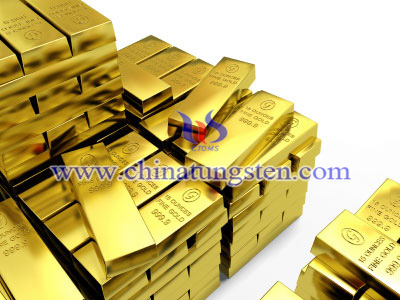
Gold plated Tungsten Product Manufacturer & Supplier: Chinatungsten Online - http://paper-weight.cn/
Tel.: 86 592 5129696; Fax: 86 592 5129797
Email: sales@chinatungsten.com
Tungsten & Molybdenum Information Bank: http://i.chinatungsten.com
Tungsten News & Tungsten Prices, 3G Version: http://3g.chinatungsten.com
Molybdenum News & Molybdenum Price: http://news.molybdenum.com.cn
Identification of Fake Gold
- Details
- Category: Tungsten Information
- Published on Monday, 14 October 2013 11:41
You can test gold in several ways to determine if it is the real thing. Real gold can be hammered and will not break or lose its shine. It will just flatten out. Fake gold will stolidly retain its original shape or shatter. You can also weigh fake gold to see if it weighs as much as the same amount of real gold would--a jeweler can help you with this. Dropping the item in question into nitric acid will also let you know whether your gold is fake, as the real gold will remain unaffected, but fake gold will change color and create a green foam.
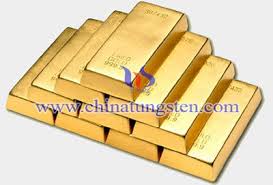
Gold plated Tungsten Product Manufacturer & Supplier: Chinatungsten Online - http://paper-weight.cn/
Tel.: 86 592 5129696; Fax: 86 592 5129797
Email: sales@chinatungsten.com
Tungsten & Molybdenum Information Bank: http://i.chinatungsten.com
Tungsten News & Tungsten Prices, 3G Version: http://3g.chinatungsten.com
Molybdenum News & Molybdenum Price: http://news.molybdenum.com.cn
Problems in the Use of Bucking Bars
- Details
- Category: Tungsten Information
- Published on Monday, 14 October 2013 11:29
Because of the high-impact loads which these tools are subjected to, over and over again, their serviceable life is quite limited. Work hardening occurs at the neck of the tool, fractures develop and the toolhead soon breaks off. Although they are relatively inexpensive, because they are so simple in design and construction, their failure can mean an improperly set fastener, downtime, etc.
Other serious problems in the use of bucking bars is the strain and fatigue which the persons using such tools experience and the noise level incident to their use. The tool must be held tight against the work, from behind, and with one hand, while the impacting fastener is applied with a work tool held in the other hand. The shock load is transmitted through to the bucking bar and is taken fully by the operator and a high-decibel shock wave is produc
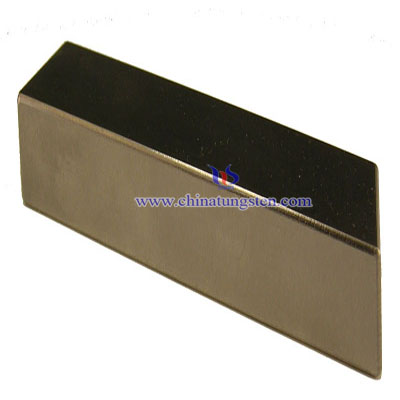
Tungsten Bucking Bar Manufacturer & Supplier: Chinatungsten Online - http://www.buckingbar.cn
Tel.: 86 592 5129696; Fax: 86 592 5129797
Email: sales@chinatungsten.com
Tungsten & Molybdenum Information Bank: http://i.chinatungsten.com
Tungsten News & Tungsten Prices, 3G Version: http://3g.chinatungsten.com
Molybdenum News & Molybdenum Price: http://news.molybdenum.com.cn
What is Bucking Bar?
- Details
- Category: Tungsten Information
- Published on Monday, 14 October 2013 11:21
Rivets and like fasteners require a backing member behind the work receiving the fastener to spread the blind end of the fastener and to stabilize the two parts while they are being fastened together. Tools of this type are commonly known as bucking bars and are usually no more than a bar of iron or steel with one end formed at a right angle.
Although there have been some suggestions for improvements in this type of tool, and notably in impact absorbing cushioning means, none have proven very successful.
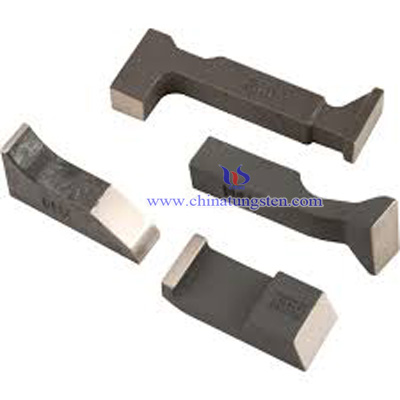
Tungsten Bucking Bar Manufacturer & Supplier: Chinatungsten Online - http://www.buckingbar.cn
Tel.: 86 592 5129696; Fax: 86 592 5129797
Email: sales@chinatungsten.com
Tungsten & Molybdenum Information Bank: http://i.chinatungsten.com
Tungsten News & Tungsten Prices, 3G Version: http://3g.chinatungsten.com
Molybdenum News & Molybdenum Price: http://news.molybdenum.com.cn
Bucking Bar Comprising
- Details
- Category: Tungsten Information
- Published on Monday, 14 October 2013 11:14
A bucking bar, comprising: toolhead and handle parts secured together and having a low recoil impact absorbing and compressible spacer provided there between, said toolhead and handle parts being formed for interfitting engagement and butt end shouldered engagement of the former against the latter, and fastener means extending transversely across and between said toolhead and handle parts for holding said toolhead and handle parts engaged with said spacer and for allowing relative movement therebetween in the impact absorbing compression of said spacer, said toolhead and handle parts having interfitting planular wall surfaces extending longitudinally and said fastener means provided therethrough.
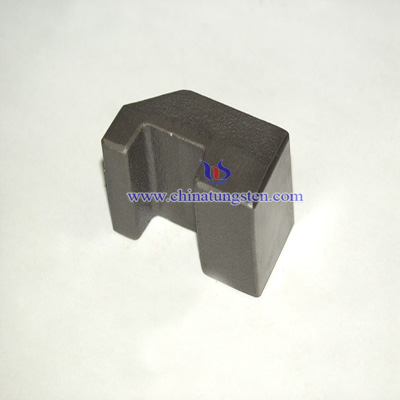
Tungsten Bucking Bar Manufacturer & Supplier: Chinatungsten Online - http://www.buckingbar.cn
Tel.: 86 592 5129696; Fax: 86 592 5129797
Email: sales@chinatungsten.com
Tungsten & Molybdenum Information Bank: http://i.chinatungsten.com
Tungsten News & Tungsten Prices, 3G Version: http://3g.chinatungsten.com
Molybdenum News & Molybdenum Price: http://news.molybdenum.com.cn
Zirconium Tungsten Electrodes Object of The Invention of New Materials and Basic Design
- Details
- Category: Tungsten Information
- Published on Saturday, 12 October 2013 18:51
Zirconium tungsten electrodes new material object of the invention is to provide a zirconium tungsten electrode new materials, in addition to ensure the use of performance indicators have reached the international zirconium tungsten electrode material , but also improve the zirconium tungsten electrodes new material ductility and stress processing performance, increase yield and expand its use . 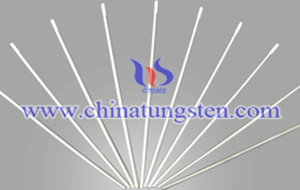
Tungsten electrodes new material zirconium basic design of the invention to change the electrode material zirconium tungsten , tungsten oxide, zirconium content ratio , while the component is added to improve processing performance pressure , improve the ductility of yttrium oxide , cobalt ingredients, the object of the present invention .
Specific embodiments of the present invention is described below. Zirconium tungsten electrodes new material made of tungsten , zirconia, yttria , four major components, which are cobalt , contains a very small amount of aluminum , iron, silicon , nickel, magnesium, copper , molybdenum and carbon impurities. The four main elements of the new tungsten electrode material content of zirconium contained in the ratios were : tungsten content 98 ~ 98.8% , content of zirconium oxide, 0.91 to 1.2% yttria content of 0.01 to 0.07% cobalt 0.01 to 0.02%. According to the above formula, according to conventional processes existing zirconium tungsten electrodes made of new materials to replace thorium tungsten, cerium and zirconium tungsten electrode material , superior processing performance of the pressure existing foreign zirconium tungsten electrode material .
Tungsten Alloy Manufacturer & Supplier: Chinatungsten Online - http://www.tungsten-alloy.com
Tel.: 86 592 5129696; Fax: 86 592 5129797
Email: sales@chinatungsten.com;sales@xiamentungsten.com
Tungsten & Molybdenum Information Bank: http://i.chinatungsten.com
Tungsten News & Tungsten Prices, 3G Version: http://3g.chinatungsten.com
Molybdenum News & Molybdenum Price: http://news.molybdenum.com.cn
Tungsten Carbide Hardfacing
- Details
- Category: Tungsten Information
- Published on Saturday, 12 October 2013 18:24
When tungsten and carbon unite they become one of the hardest of all carbides. Tungsten carbide hardfacing is a fast and easy method for applying tungsten carbide to parts and equipment exposed to wear. Its versatility and flexibility in terms of the application methods cannot be surpassed.
Tungsten carbide is an ideal material when confronting severe abrasion applications, and tungsten carbide hardfacing will reduce wear in the mining and processing of ores and minerals, agriculture, construction and mining ground engaging tools, drilling for oil and gas or horizontal directional drilling, tunneling, and recycling.
Tungsten Carbide Manufacturer & Supplier: Chinatungsten Online - http://www.tungsten-carbide.com.cn
Tel.: 86 592 5129696; Fax: 86 592 5129797
Email: sales@chinatungsten.com
Tungsten & Molybdenum Information Bank: http://i.chinatungsten.com
Tungsten News & Tungsten Prices, 3G Version: http://3g.chinatungsten.com
Molybdenum News & Molybdenum Price: http://news.molybdenum.com.cn
Zirconium Tungsten Electrodes Invention of New Materials
- Details
- Category: Tungsten Information
- Published on Saturday, 12 October 2013 18:24
New materials zirconium tungsten electrode metal welding materials technology invention relates to the field .  One kind of zirconium tungsten electrode , new materials, whose main ingredient is a constituent element of the entire content of 98 to 98.8 % of the tungsten, 0.91 to 1.2% zirconium . The invention belongs to metal welding materials technology category.
One kind of zirconium tungsten electrode , new materials, whose main ingredient is a constituent element of the entire content of 98 to 98.8 % of the tungsten, 0.91 to 1.2% zirconium . The invention belongs to metal welding materials technology category.
Currently in the arc welding , plasma welding thoriated tungsten alloy commonly used in the electrode material . Performance has improved in recent years has adopted a cerium tungsten alloy electrode, plasma cutting materials generally used in pure zirconium electrode . Thorium tungsten electrode materials, the biggest drawback is the α -ray intensity is extremely high, serious damage to the body's health and pollute the environment. Comparison with thorium tungsten electrode material , cerium tungsten electrode material generated during the operation α -ray dose is extremely small, only one-thousandth of thorium tungsten electrode material about other performance indicators can be at or near the thorium tungsten electrode material . These two materials in the AC arc electrode burning large , low life is another disadvantage that they co-exist . Although the performance of pure zirconium electrode material can reach thorium tungsten , cerium tungsten electrodes indicators, but the electrode material products cost more than the latter two electrodes 1 to 1.5 times higher . Countries, such as the United Kingdom in addition to tungsten thorium , cerium and zirconium tungsten electrodes , but also the use of a zirconium tungsten electrode material , its main ingredient is tungsten W , 99% zirconium oxide ZrO2 0.7 to 0.9 %, other impurities. In the same work norms , the ratio of cerium tungsten electrode tungsten material zirconium , thorium tungsten electrode material burning rates are low , long life, electrode temperature increased, the thickness of the workpiece increases, narrow kerf or welds , welding, cutting quality than cerium tungsten, thorium tungsten electrode materials , electrode materials cost less than pure zirconium , and in AC arc can be widely used. Coupled with the electrode material α -ray dose is small, reducing the damage to human and environmental pollution , to create the conditions for the automated production . However, the material brittle material , pressure processing performance is poor , the low yield machining electrode .
Tungsten Alloy Manufacturer & Supplier: Chinatungsten Online - http://www.tungsten-alloy.com
Tel.: 86 592 5129696; Fax: 86 592 5129797
Email: sales@chinatungsten.com;sales@xiamentungsten.com
Tungsten & Molybdenum Information Bank: http://i.chinatungsten.com
Tungsten News & Tungsten Prices, 3G Version: http://3g.chinatungsten.com
Molybdenum News & Molybdenum Price: http://news.molybdenum.com.cn
Emissivity of Tungsten Electrodes and Preventive Measures
- Details
- Category: Tungsten Information
- Published on Saturday, 12 October 2013 18:20
On the market cerium tungsten, tungsten- lanthanum , yttrium tungsten, pure tungsten , zirconium , tungsten thorium tungsten electrodes . Tungsten cerium , lanthanum tungsten, pure tungsten , zirconium tungsten electrode non-radioactive ; thorium tungsten electrode is the world's highest market share of tungsten electrodes kind , accounting for over 70% of the world , but because thorium tungsten electrode grinding and polishing powder metallurgy and rolling will occur during radioactive contamination on the human body and the environment has a lot of harm , so European countries limit the production of the varieties electrode ; multivariate composite rare earth tungsten electrodes because they do not use radioactive elements thorium , to achieve a non-radioactive contamination in the field of green production and use. So in general there is a radioactive tungsten electrodes , mainly because more than 71% on the market using the thorium containing radioactive thorium tungsten electrode .  < br />
< br />
Measures to prevent radiation injury
( 1) Thorium tungsten rod should be a dedicated storage device , a lot of storage should be hidden in a metal box inside , and install the exhaust pipe .
( 2 ) Use of airtight cover welding, the operation should not open the cover , manual operation, the air must wear protective helmets or use other effective measures .
( 3 ) Shall be available exclusively to the grinding wheel thorium tungsten rod , wheel confidential install dust removal equipment, grinder debris on the ground should always be wet wipe and focus deep processing .
( 4 ) Grinding thorium tungsten rod should wear dust masks. After contact with thorium tungsten rod should wash their hands with soap and running water , and wash clothes and gloves .
( 5 )The selection of appropriate standards welding , to avoid excessive burning thorium tungsten rod .
( 6 ) As far as possible without the use of thorium tungsten rod cerium or lanthanum tungsten rod tungsten rod , because the latter two non-radioactive .
Tungsten Alloy Manufacturer & Supplier: Chinatungsten Online - http://www.tungsten-alloy.com
Tel.: 86 592 5129696; Fax: 86 592 5129797
Email: sales@chinatungsten.com;sales@xiamentungsten.com
Tungsten & Molybdenum Information Bank: http://i.chinatungsten.com
Tungsten News & Tungsten Prices, 3G Version: http://3g.chinatungsten.com
Molybdenum News & Molybdenum Price: http://news.molybdenum.com.cn
Radioactive Thorium Tungsten Electrode and Preventive Measures
- Details
- Category: Tungsten Information
- Published on Saturday, 12 October 2013 18:17
TIG and plasma arc welding using thorium tungsten electrode containing 1-1.2 % of thorium oxide , thorium is a radioactive substance , in the welding process and thorium tungsten rod contact with the process, affected by radiation . Radiation acting on the body in two forms : one is external irradiation , the second is to enter the body through the respiratory and digestive systems occur in vivo exposure. From the right TIG and plasma welding mask a lot of investigation and determination proved that they are less harmful radioactivity , because daily consumption of thorium tungsten rods only 100-200 mg dose of radiation is minimal , little effect on the human body . But there are two cases must be noted: First, in the container welding, poor ventilation , dust in the radioactive particles may exceed health standards ; Second, when the grinding and the presence of thorium thorium tungsten rod tungsten rod locations , radioactive aerosols and radioactive dust concentration can reach or exceed health standards. Radioactive substances invade the body can cause chronic radiation sickness , mainly in the general functional state weakened , you can see the obvious debilitating weakness, decreased resistance to infectious diseases , weight loss and other symptoms. 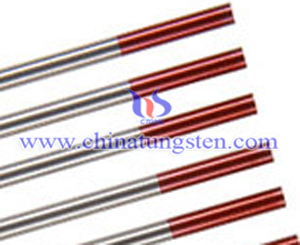 < br />
< br />
Measures to prevent radiation injury
( 1) Thorium tungsten rod should be a dedicated storage device , a lot of storage should be hidden in a metal box inside , and install the exhaust pipe .
( 2 ) Use of airtight cover welding, the operation should not open the cover , manual operation, the air must wear protective helmets or use other effective measures .
( 3 ) Shall be available exclusively to the grinding wheel thorium tungsten rod , wheel confidential install dust removal equipment, grinder debris on the ground should always be wet wipe and focus deep processing .
( 4 ) Grinding thorium tungsten rod should wear dust masks. After contact with thorium tungsten rod should wash their hands with soap and running water , and wash clothes and gloves .
( 5 ) The selection of appropriate standards welding , to avoid excessive burning thorium tungsten rod .
( 6 ) As far as possible without the use of thorium tungsten rod cerium or lanthanum tungsten rod tungsten rod , because the latter two non-radioactive .
Tungsten Alloy Manufacturer & Supplier: Chinatungsten Online - http://www.tungsten-alloy.com
Tel.: 86 592 5129696; Fax: 86 592 5129797
Email: sales@chinatungsten.com;sales@xiamentungsten.com
Tungsten & Molybdenum Information Bank: http://i.chinatungsten.com
Tungsten News & Tungsten Prices, 3G Version: http://3g.chinatungsten.com
Molybdenum News & Molybdenum Price: http://news.molybdenum.com.cn



 sales@chinatungsten.com
sales@chinatungsten.com